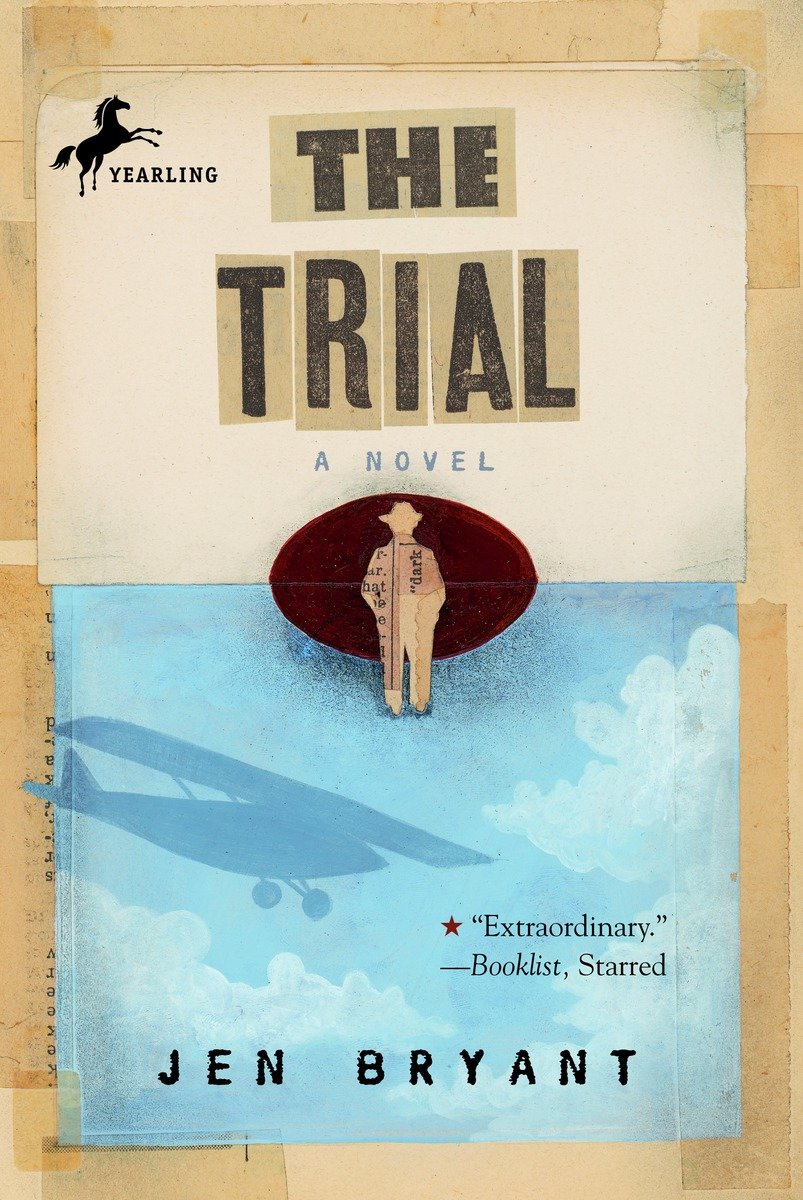The Trial:
7.99 JOD
Please allow 2 – 5 weeks for delivery of this item
Description
Imagine you are Bruno Richard Hauptmann, accused of murdering the son of the most famous man in America.In a compelling, immediate voice, 12-year-old Katie Leigh Flynn takes us inside the courtroom of the most widely publicized criminal case of the 20th century: the kidnapping and murder of Charles Lindbergh’s baby son. And in doing so, she reveals the real-life figures of the trial—the accused, the lawyers, the grieving parents—and the many faces of justice.
Additional information
| Weight | 0.15 kg |
|---|---|
| Dimensions | 1.24 × 13.34 × 3.43 cm |
| by | |
| Format | Paperback |
| Language | |
| Pages | 176 |
| Publisher | |
| Year Published | 2005-9-13 |
| Imprint | |
| For Ages | 3-7 |
| Publication City/Country | USA |
| ISBN 10 | 0440419867 |
| About The Author | Jen Bryant has published poetry, biographies for young readers, and picture books. The Trial is her first novel for children. She grew up in the same New Jersey town where the Lindbergh kidnapping trial took place many years before. |
“As Katie says, ‘When a man’s on trial for his life/isn’t every word important?’ Bryant shows why with art and humanity. Extraordinary.”–Michael Cart, Booklist, Starred |
|
| Excerpt From Book | FLEMINGTON I’ve lived in this town my whole life and I can tell you . . . nothing ever happens. Each week, the farmers bring their chickens and eggs to market and the grain trucks dump and load up at Miller’s Feed Store on North Main. The streets are wide and clean,the shop-keepers are friendly, and all the children walk to school.At Christmas, Santa comes to the bank and gives outcandy-stuffed stockings, and on Halloween there’s a big parade at the courthouse with cider and donuts and prizes for the Prettiest, Funniest, and Scariest.With all this, you’d think I’d be happy as a clam here in Flemington, and why that’s not so, I may never really know–but I do know that whenever I readNational Geographic or Time or look through one of my uncle’s travel books–the ones with pictures of glaciers and deserts,palm-treed islands and busy cities–I’m always wishing myself into them. “You’re restless, Katie Leigh, just like your father was”is Mother’s explanation, but sincehe left us so long ago I guess that’s another thing I’ll never really know. THE PHOTOGRAPH From the photograph, we don’tlook a lot alike:his hair dark brown(mine is black),his eyes hazel gray(mine are dusky green),his nose long and thin,(mine small and wide, a few scattered freckles along each side),but then . . . there’s that full lower lip (I have that)and his dimpled chin( I have that too)and the way his head tilts just a little to the left,like he’s about to ask a questionor trying to get a different perspective (Mother says I do this all the time).I guess I believe he’s a part of me, though I wish I had more than a five-by-seven phototo prove it.AT THE RAILYARDSometimes I watch the train men turn engine, watch the box cars unhitch and recouple, watch the forklifts load the flatbeds and the fireman shovel coal. Sometimes I try to remember my father.Sometimes, when there’s nothing else to do,I stay all day until the last train leaves, and all I can see is a thin line of steam, way off in the distance.SULLENAt the tracks, I usually find Mike, his back against the big wooden boxwhere the station master keeps his rain cape and his tools.We don’t talk much. But once in a while, we talk a lot.Mike told me his mother died when he was five and his fatherhas been drinking too muchever since.On sunny days, I bring a book and read it while hewhittles oak sticks into animals with his pocket knife, or with his hands, shapes faces from and pieces of clay.When I bring leftovers from the kitchen he tries to refuse, but when I start chewing, he does too.He borrows my books, and I know he’s smart becausehe asks me all these questionsabout the charactersthat I never thought about before,and I have to go home and think on thembefore I can answer.Mike is not likethe other boys I know . . . he’s notstuck-up or loud-mouthed or silly. At school, he’s real quiet. He sits in the back row so no one will noticeif he falls asleep from staying up late waiting for his father.The teachers all say he’s “sullen,”but if you tell him a good joke, he laughsthe kind of laugh that makes you join in, makes you forget your troubles.Once, when he walked me home, he stopped before the big blue house on the corner to watch the family inside at supper: the mother serving the soup, the father carving the bread, the children chattering–the neat white plates,the yellow curtains on the windows,the warm steam rising from the bowls.WHEN SOMETHING HAPPENED . . . Actually, something did happen hereabout two years ago–not in our town exactly, but just ten miles away, in Hopewell, N.J. Something happened on March 1st, 1932, between 7:30 and 10 pm,at the home of Colonel Charles Lindbergh,the first man to fly across the Atlantic Oceanalone, our bravest and greatest pilot, an American hero.Something happenedon that stormy night, as the wind howled outside his house on Sourland Mountain,while the Colonel and Mrs. Lindbergh were reading and sipping teaand Wahgoosh, their terrier, laid curled at their feet.Something happenedto the their little baby–Charles Lindbergh, Jr., just 20 months old–while he was sleeping in his upstairs room, while the butler was polishing silver and the maid was doing dishes.Someone climbed into a second-floor windowand pulled Little Charlie out of his criband carried him outside to a ladderand climbed down holding himwhile the wind groaned and a car waited. Someone kidnapped Charles Lindbergh’s first-born son, leaving only some muddy footprints,a broken ladder,and a ransom note.And no one sawwho did it. |
Only logged in customers who have purchased this product may leave a review.






Reviews
There are no reviews yet.